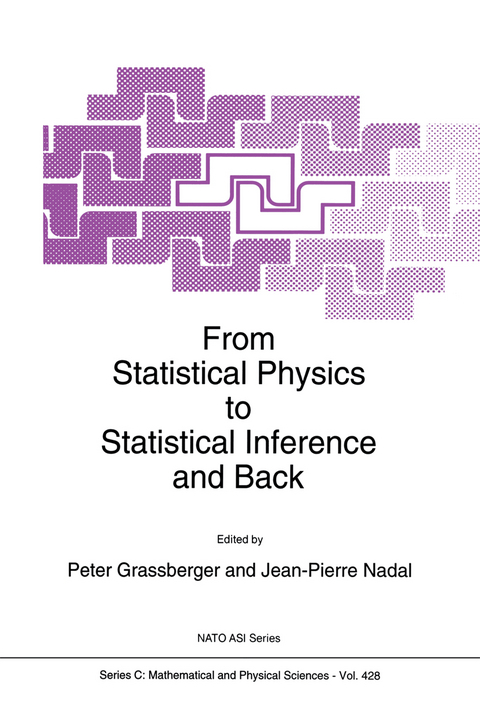
From Statistical Physics to Statistical Inference and Back
Springer (Verlag)
978-94-010-4465-3 (ISBN)
Physicists, when modelling physical systems with a large number of degrees of freedom, and statisticians, when performing data analysis, have developed their own concepts and methods for making the `best' inference. But are these methods equivalent, or not? What is the state of the art in making inferences? The physicists want answers. More: neural computation demands a clearer understanding of how neural systems make inferences; the theory of chaotic nonlinear systems as applied to time series analysis could profit from the experience already booked by the statisticians; and finally, there is a long-standing conjecture that some of the puzzles of quantum mechanics are due to our incomplete understanding of how we make inferences. Matter enough to stimulate the writing of such a book as the present one.
But other considerations also arise, such as the maximum entropy method and Bayesian inference, information theory and the minimum description length. Finally, it is pointed out that an understanding of human inference may require input from psychologists. This lively debate, which is of acute current interest, is well summarized in the present work.
Some remarks on.- Statistical mechanics and the maximum entropy method.- Irreversibility, probability and entropy.- Maximum entropy for random cellular structures.- Minimal Description Length modeling: an introduction.- An introduction to learning and generalization.- Information geometry and manifolds- of neural networks.- Uncertainty as a resource for managing complexity.- The development of Information Theory.- Statistical inference, zero-knowledge and proofs of identity.- Spin glasses: an introduction.- Statistical Mechanics and error-correcting codes.- Learning and generalization with undetermined architecture.- Confronting neural network and human behavior in a quasiregular environment.- Sensory processing and information theory.- The formation of representations in the visual cortex.- Classifier systems: models for learning agents.- Space time dynamics and biorthogonal analysis: mementum.- Symbolic encoding in dynamical systems.- Topological organization of (low-dimensional) chaos.- Noise Separation and MDL modeling of chaotic processes.- Inference in Quantum Mechanics.- Decoherence and the existential interpretation of quantum theory or “no information without representation”.- List of Contributors.
| Reihe/Serie | NATO Science Series C ; 428 |
|---|---|
| Zusatzinfo | VIII, 355 p. |
| Verlagsort | Dordrecht |
| Sprache | englisch |
| Maße | 160 x 240 mm |
| Themenwelt | Informatik ► Theorie / Studium ► Kryptologie |
| Informatik ► Theorie / Studium ► Künstliche Intelligenz / Robotik | |
| Naturwissenschaften ► Physik / Astronomie ► Theoretische Physik | |
| Naturwissenschaften ► Physik / Astronomie ► Thermodynamik | |
| ISBN-10 | 94-010-4465-1 / 9401044651 |
| ISBN-13 | 978-94-010-4465-3 / 9789401044653 |
| Zustand | Neuware |
| Haben Sie eine Frage zum Produkt? |
aus dem Bereich


